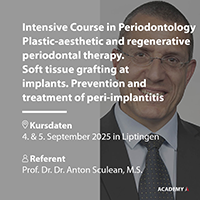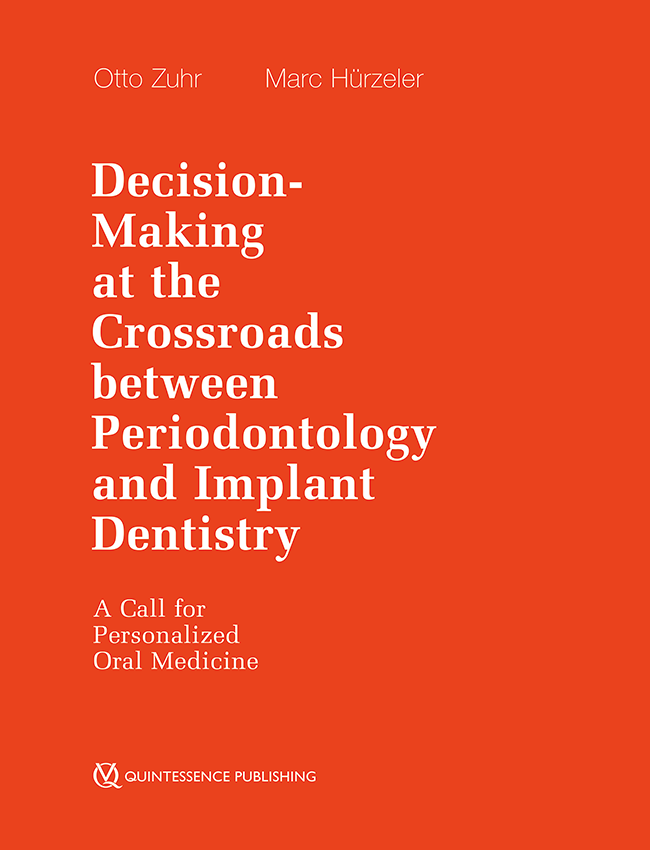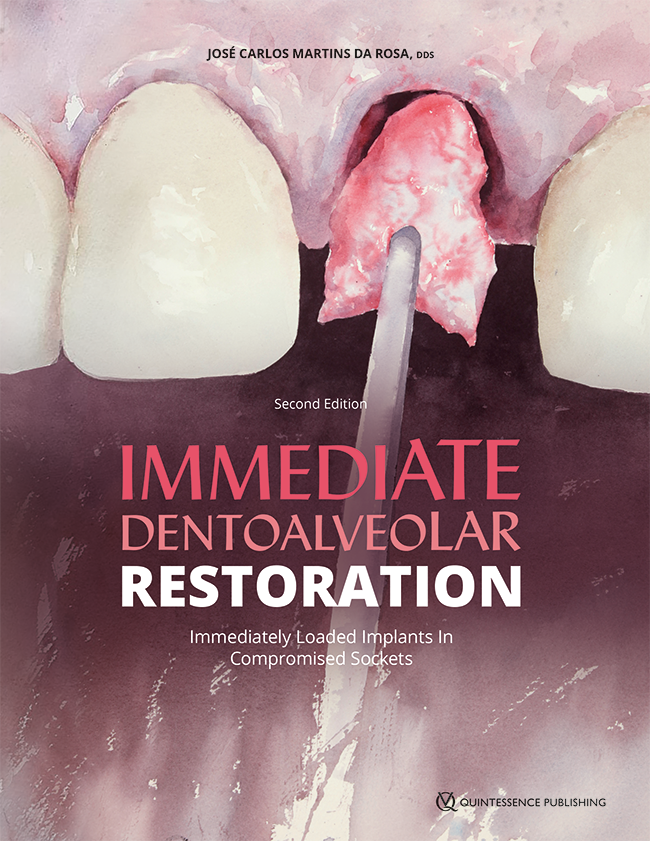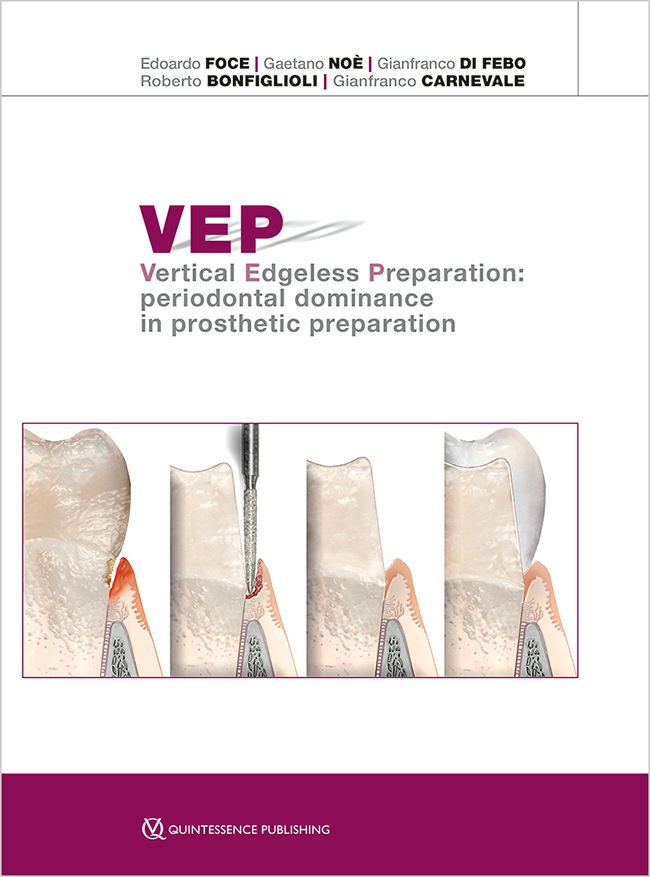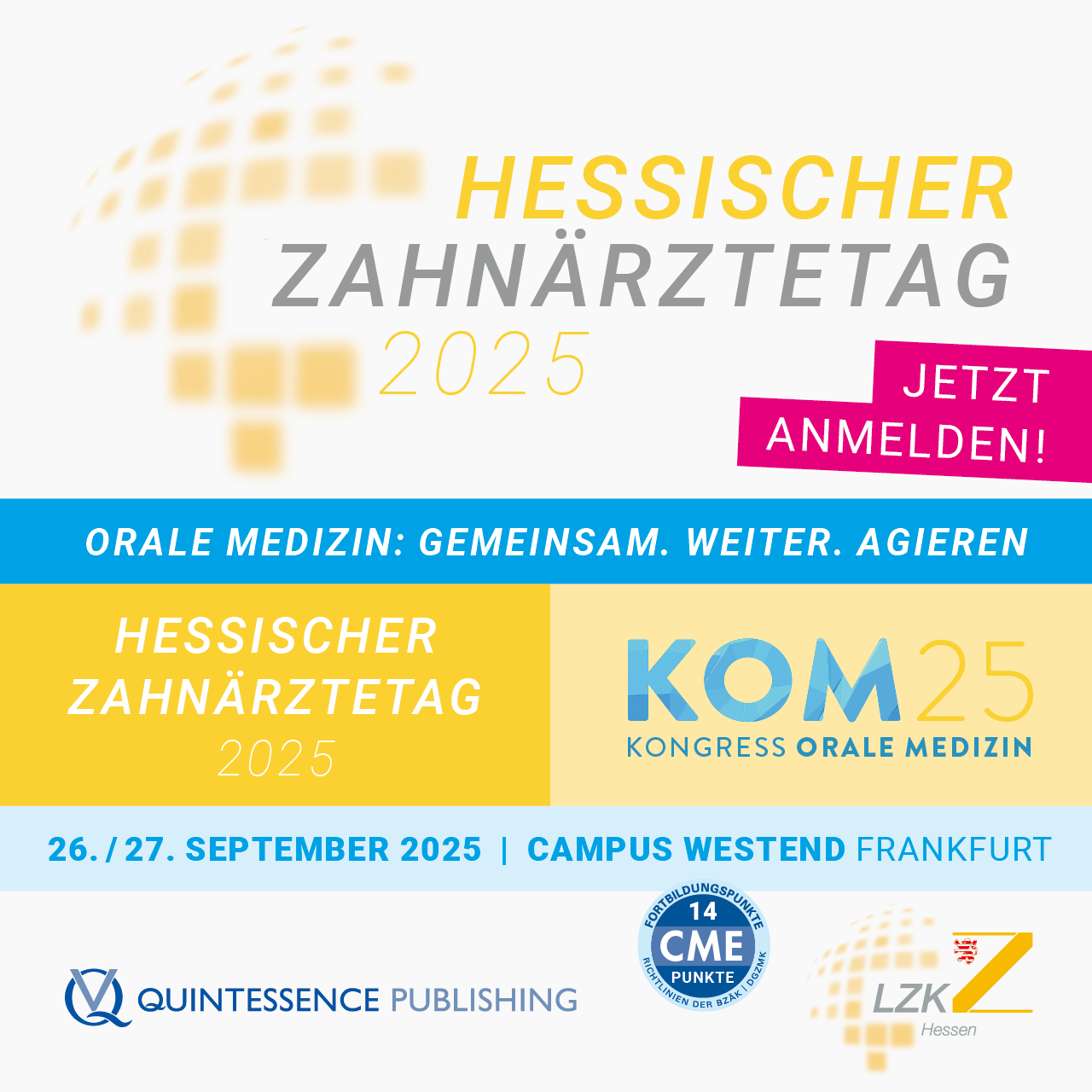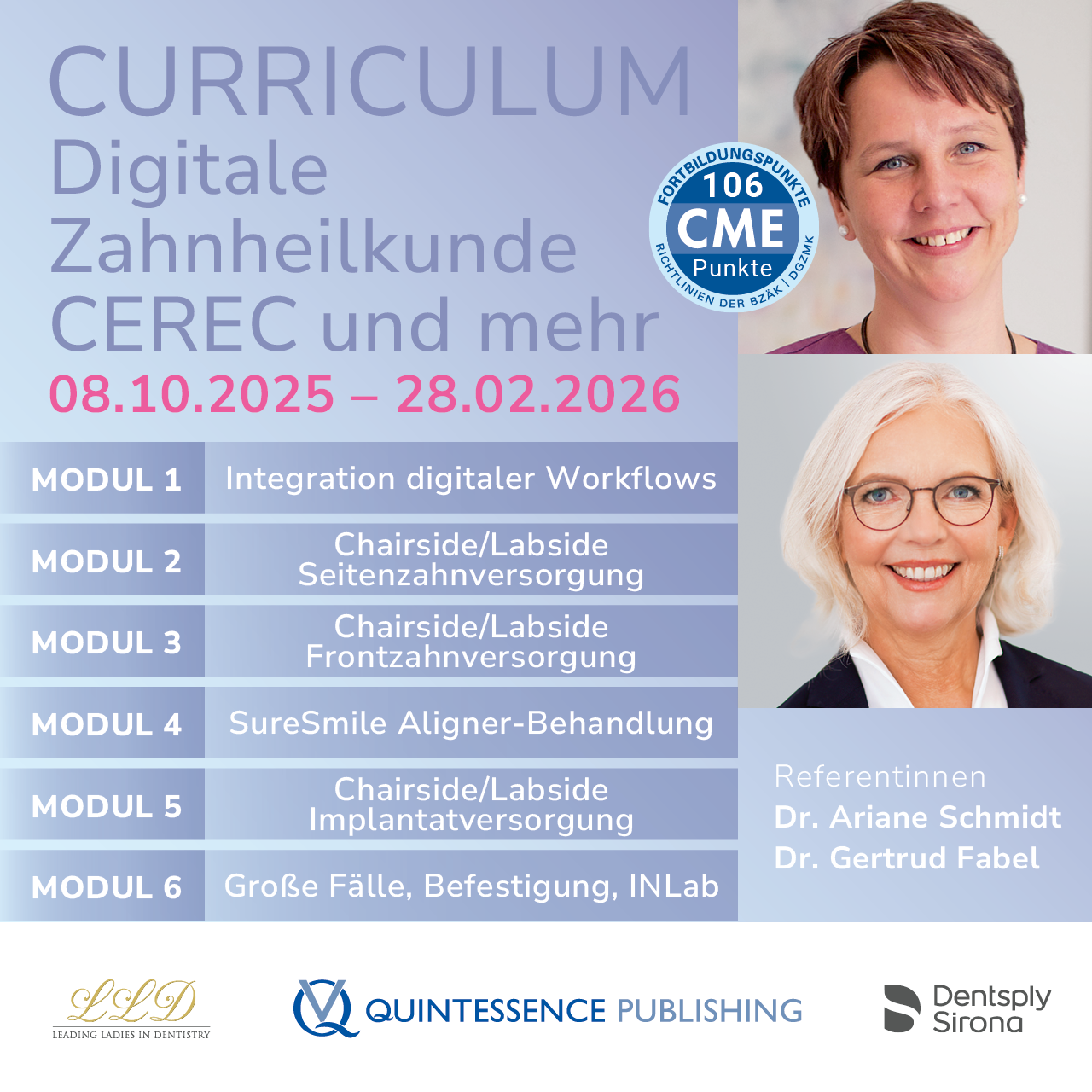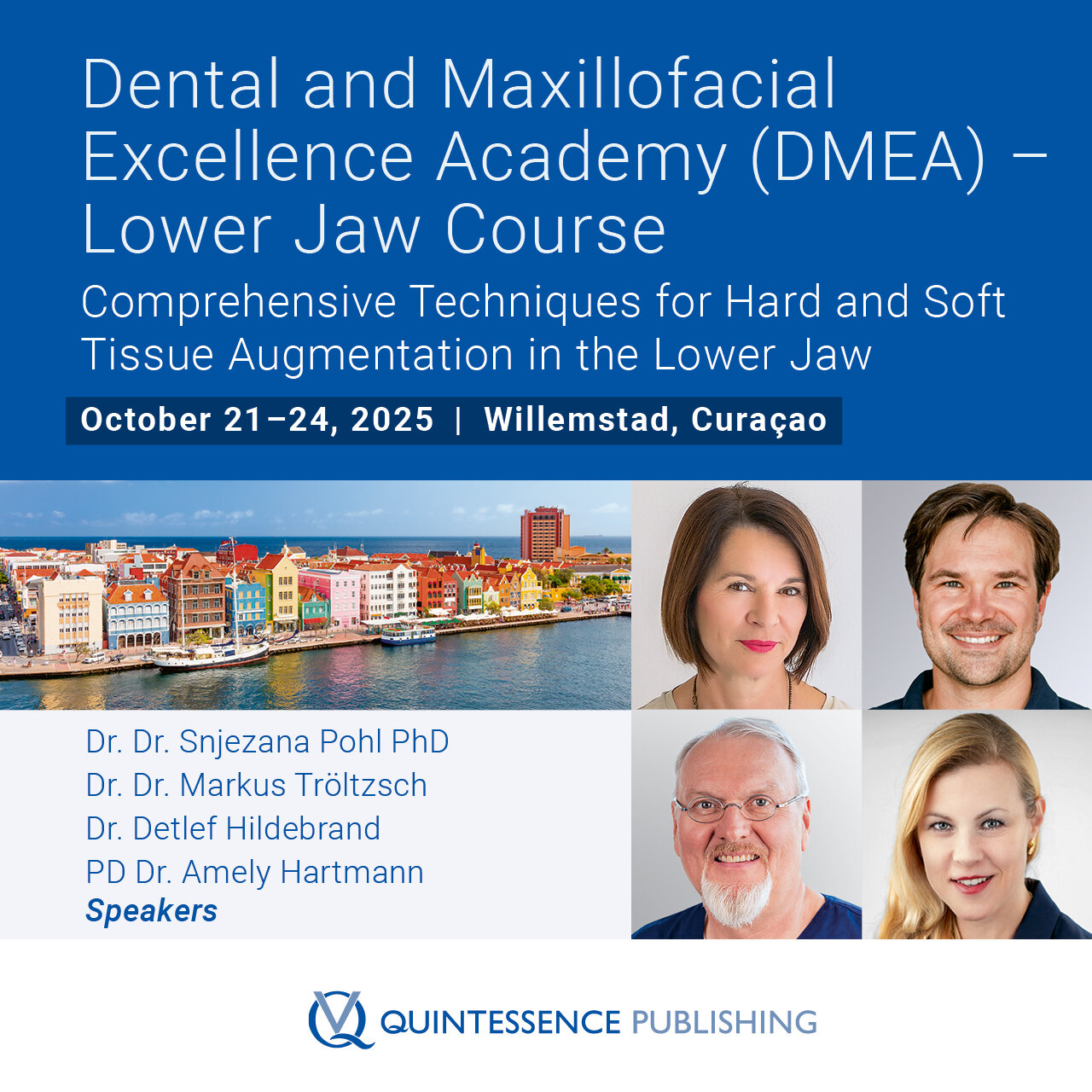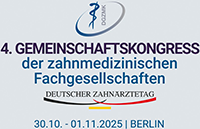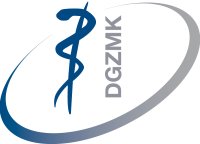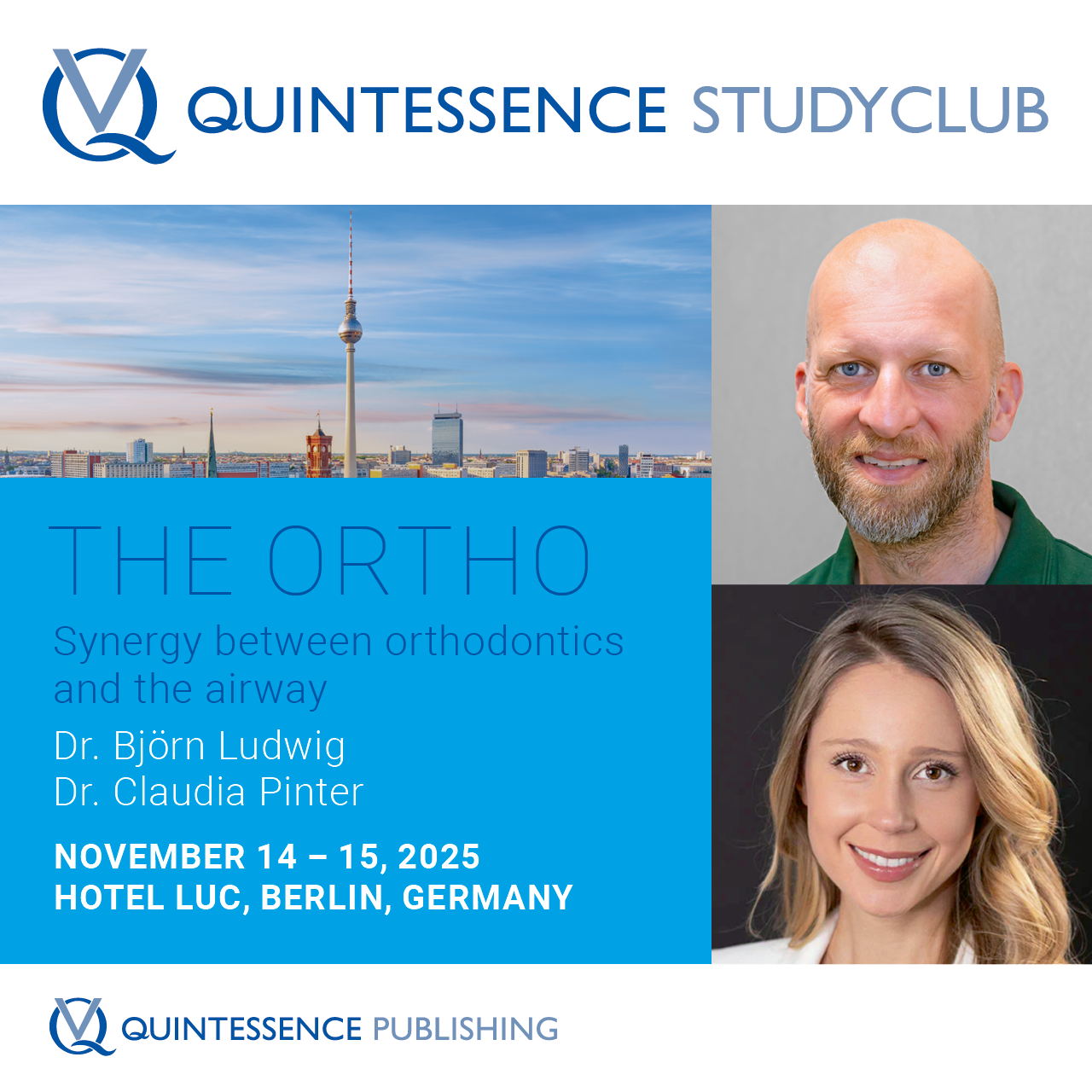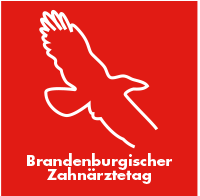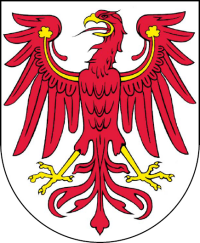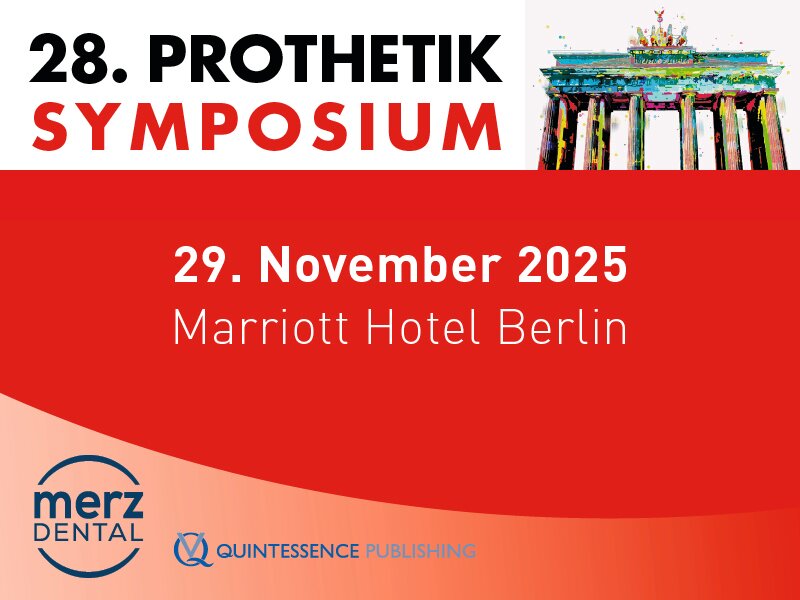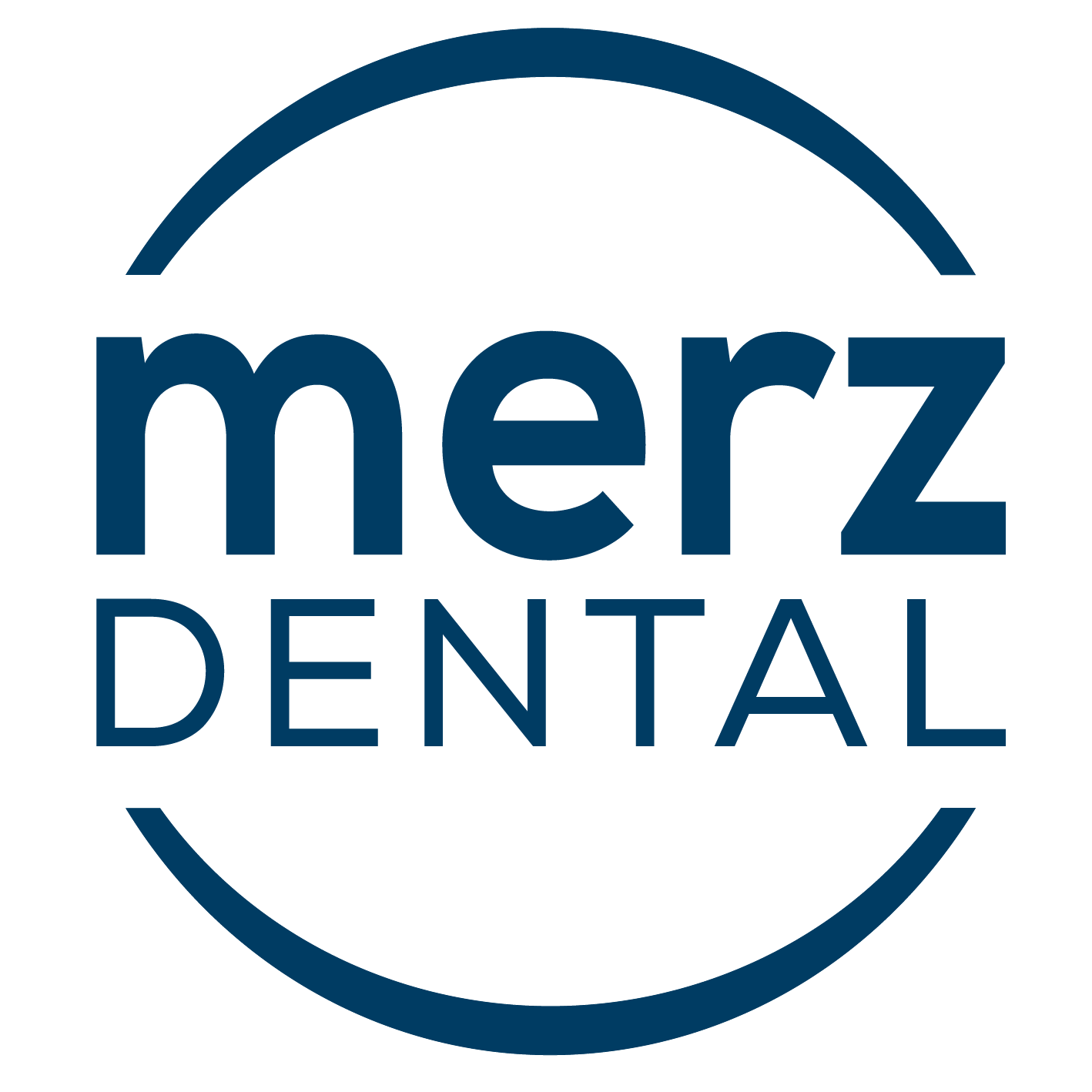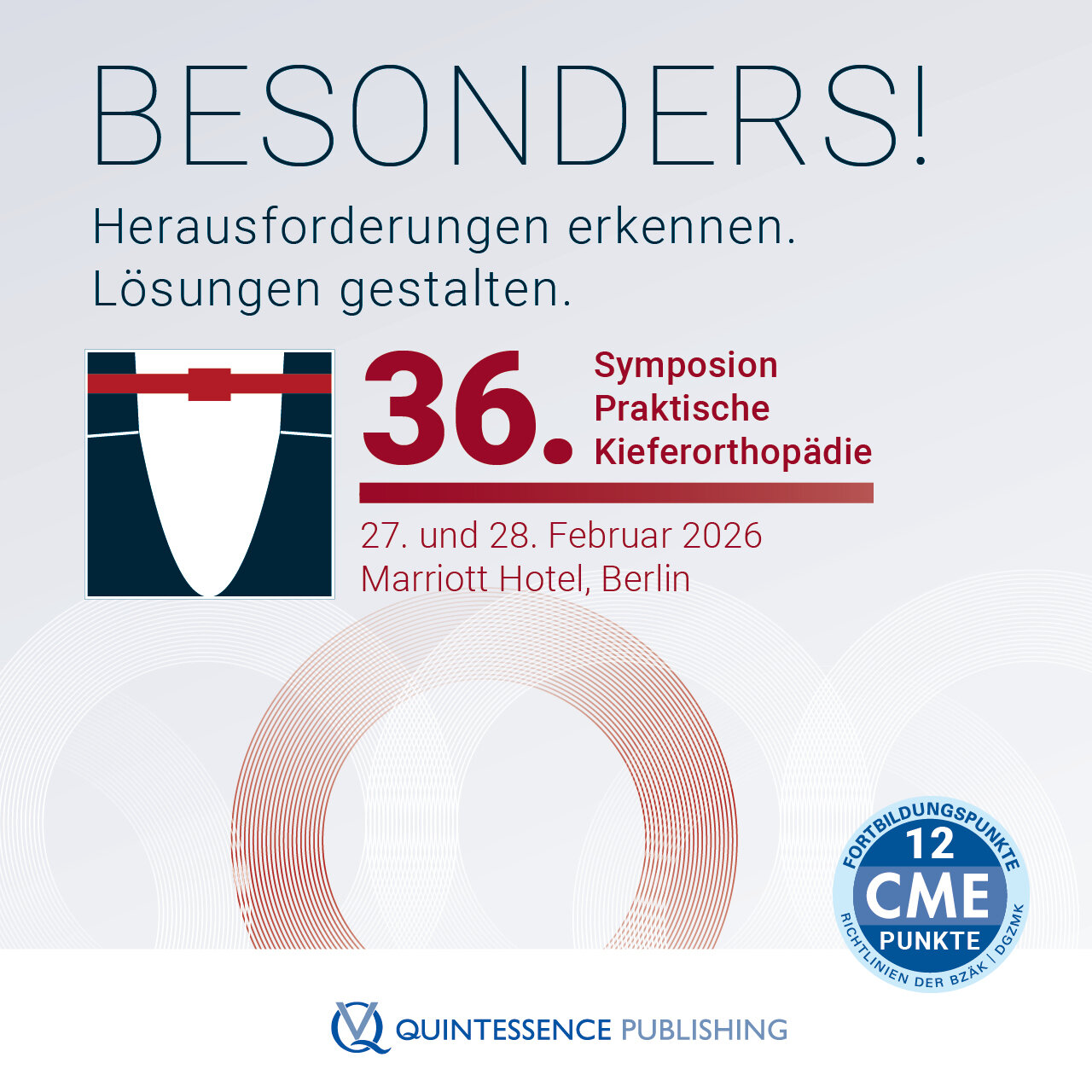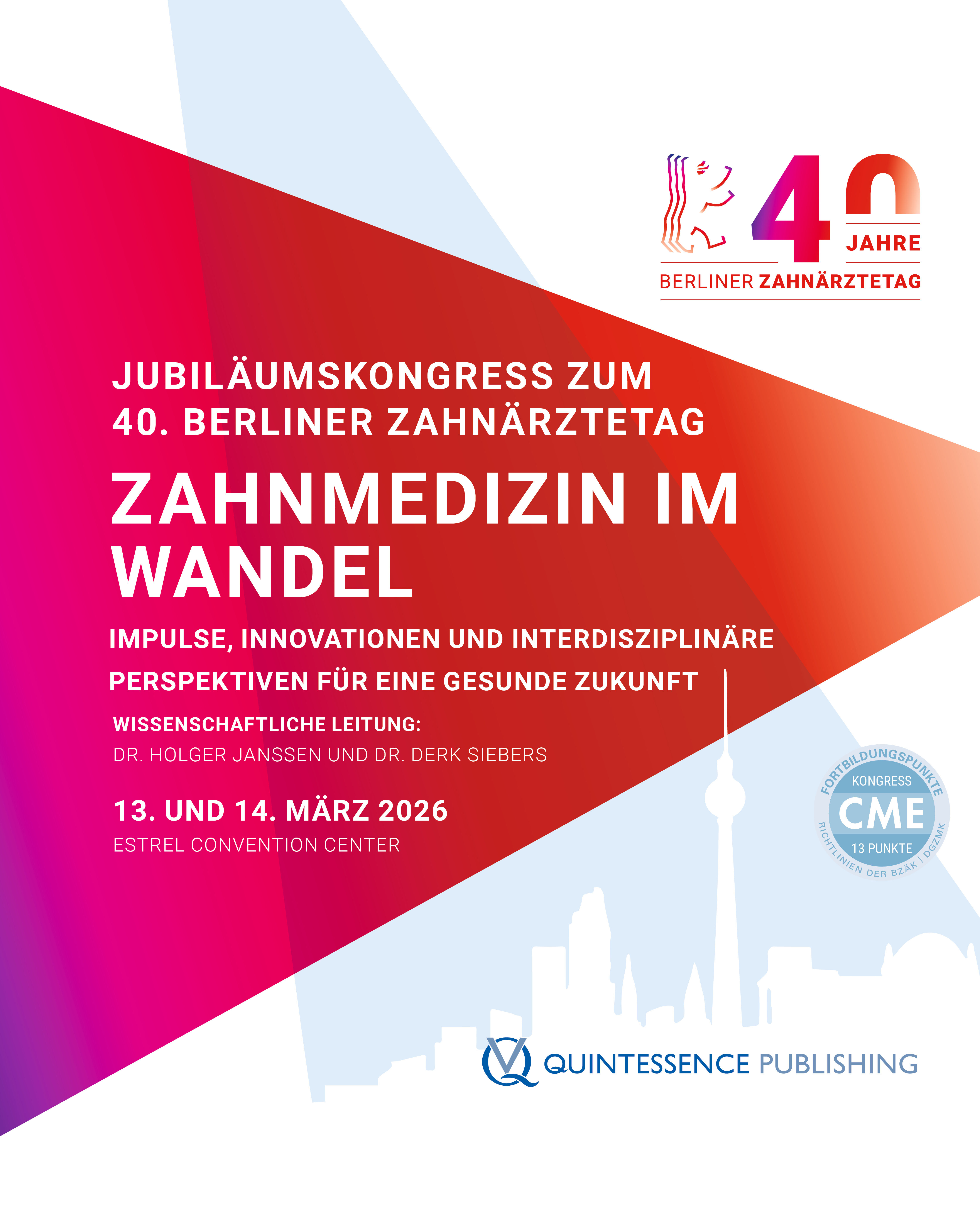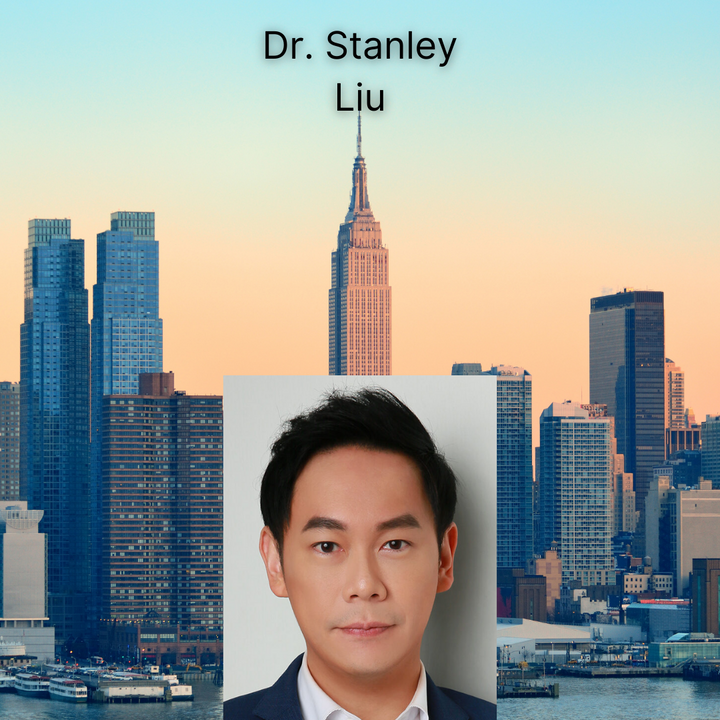Intensive Course in Periodontology: Plastic-aesthetic and regenerative periodontal therapy. Soft tissue grafting at implants. Prevention and treatment of peri-implantitis
The aim of this course is to provide the general practitioner and the specialist with a comprehensive, evidence-based concept aiming to successfully manage periodontally compromised patients. During the 2 days, a treatment concept based on the scientific evidence from the last 3 decades will be provided.
The concept will address the most important aspects related to the treatment of periodontal and peri-implant diseases including diagnosis, nonsurgical, antibiotic/antiseptic, surgical, regenerative and plastic-esthetic surgery. Treatment concepts for peri-implantitis and recession coverage at implants will round up the course content.
Case presentations and case discussions will illustrate on when and how the scientific evidence can be included in the overall treatment philosophy helping the clinician to immediately implement the acquired knowledge in the daily practice.
Day 1
Treatment planning in periodontal compromised patients.
Regenerative periodontal therapy.
Treatment of peri-implant mucositis and peri-implantitis
Theoretical part
1 Diagnosis and treatment planning
2 Reconstructive/regenerative periodontal surgery
a Biology of periodontal wound healing and regeneration
b Regenerative materials in periodontology:
- Bone grafts/bone substitute materials
- Guided Tissue Regeneration (GTR)
- Enamel Matrix Proteins (Emdogain)
- Platelet Rich Plasma/Platelet Rich Fibrin (PRP/PRF)
- Growth factors (rhPDGF, BMPs, GDF-5)
- Use of Hyaluronic acid
- Combination approaches
c Treatment concepts for intrabony defects
d Treatment concepts for furcations
e Long-term results following regenerative periodontal therapy.
3 Implants in periodontitis patients
4 Treatment concepts for peri-implant mucositis and peri-implantitis
Practical part
1 Flap designs:
a Papilla Preservation Technique (Takei)
b Modified Papilla Preservation Technique
c Simplified Papilla Preservation Technique
2 Regenerative surgery of an intrabony defect with regenerative materials including biologics, grafting material, and membrane
3 Regenerative surgery of a furcation defect with regenerative materials including biologics, grafting material, and membrane
4 Suturing techniques to achieve primary closure and optimize wound stability:
a Vertical and horizontal mattress sutures
b Modified mattress sutures.
c Double sling suture
Day 2
Predictable treatment of single and multiple gingival recessions.
Treatment of soft tissue defects at implants.
Theoretical part
1 Etiology of recession defects around natural teeth and dental implants
2 Classification of recession defects
3 Clinical concept for treatment of single and multiple gingival recessions
a The Modified Coronally Advanced Tunnel (MCAT)
b The Laterally Closed Tunnel (LCT)
c The Combined MCAT + LCT
4 Soft tissue grafting to obtain attached mucosa around dental implants
5 Soft tissue grafting and recession coverage at dental implants: possibilities and limits
6 Use of soft tissue replacement grafts: possibilities and limits
7 Post-operative protocol following reconstructive periodontal surgery
Practical part
The following issues will be trained on pig jaws:
1 Modified Coronally Advanced Tunnel (MCAT) with the use of connective tissue graft and soft tissue replacement grafts
2 The Combined MCAT + LCT
3 Harvesting technique for palatal connective tissue graft
4 Suturing techniques for closure of palatal donor site
5 Suturing technique for graft fixation
6 Suturing technique for coronal flap displacement
7 Suturing technique for lateral closure
8 Surgical technique for placement of free gingival graft or collagen based soft tissue replacement grafts to increase keratinized tissue width around teeth and dental implants.
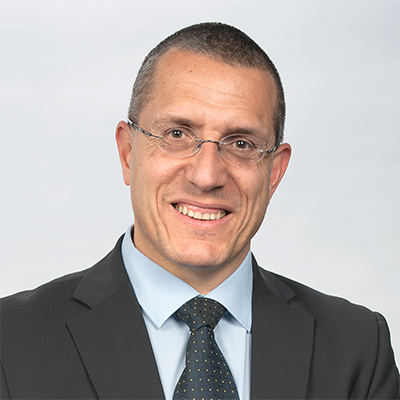
Prof. Dr. Dr. Anton Sculean MSc
Schweiz, Bern1985 bis 1990: Studium in Budapest. 1990 bis 1991: Assistenz in freier Praxis. 1991 bis 1992: Assistenz in der Poliklinik für Paradontologie in Münster. 1993 bis 1995: Postgrad.-Ausbildung am Royal Dental College Aarhus/Dänemark. 1997: Facharzt für Paradontologie (Master of Science in Periodontology in Aarhus/Dänemark). 1998 bis 2002: Oberarzt in Homburg/Saar. 1999: Spezialist der DGP. 2001: Habilitation. 2002 bis 2004: Oberarzt der Sektion Parodontologie in Mainz. 2004: Anthony Rizzo Award. Seit September 2004: Leiter der Abteilung Parodontologie an der Uni Nijmegen. Unter anderem Zweiter Vorsitzender der Arbeitsgemeinschaft für Laserzahnheilkunde, Vorstandsmitglied der DGP, Mitglied der wiss. Beiräte: Journal of Clinical Periodontology, PERIO (Periodontal Practice Today), Journal de Paradontologie et d'Implantologie Orale. 2009-2010: Präsident der Periodontal Research Group der International Association for Dental Research (IADR), Past Präsident der Schweizerischen Gesellschaft für Parodontologie (SSP), Amtierender Präsident der European Federation of Periodontology (EFP). Seit 01.08.2015: Geschäftsführender Direktor der ZMK Bern. Ordentlicher Professor und Direktor der Klinik für Parodontologie, Universität Bern; Autor von mehr als 310 Publikationen in peer reviewed Journals/Mitglied im Editor oder Mitglied im Editorial Board von 14 wissenschaftlichen Zeitschriften. Forschungspreise: u.a. Anthony Rizzo-Preis der IADR und IADR/Straumann-Award in Regenerative Periodontal Medicine.

Veranstalter/Kursanmeldung
Emminger Str. 39
78576 Emmingen-Liptingen
Deutschland
Tel.: +49 (0) 74 65 / 9260-10
Fax: +49 (0) 74 65 / 9260-50
E-Mail: vertrieb@stoma.de
Web: https://www.stoma.de/
Intensive Course in Periodontology: Plastic-aesthetic and regenerative periodontal therapy. Soft tissue grafting at implants. Prevention and treatment of peri-implantitis
4. Sept. 2025 — 5. Sept. 2025



